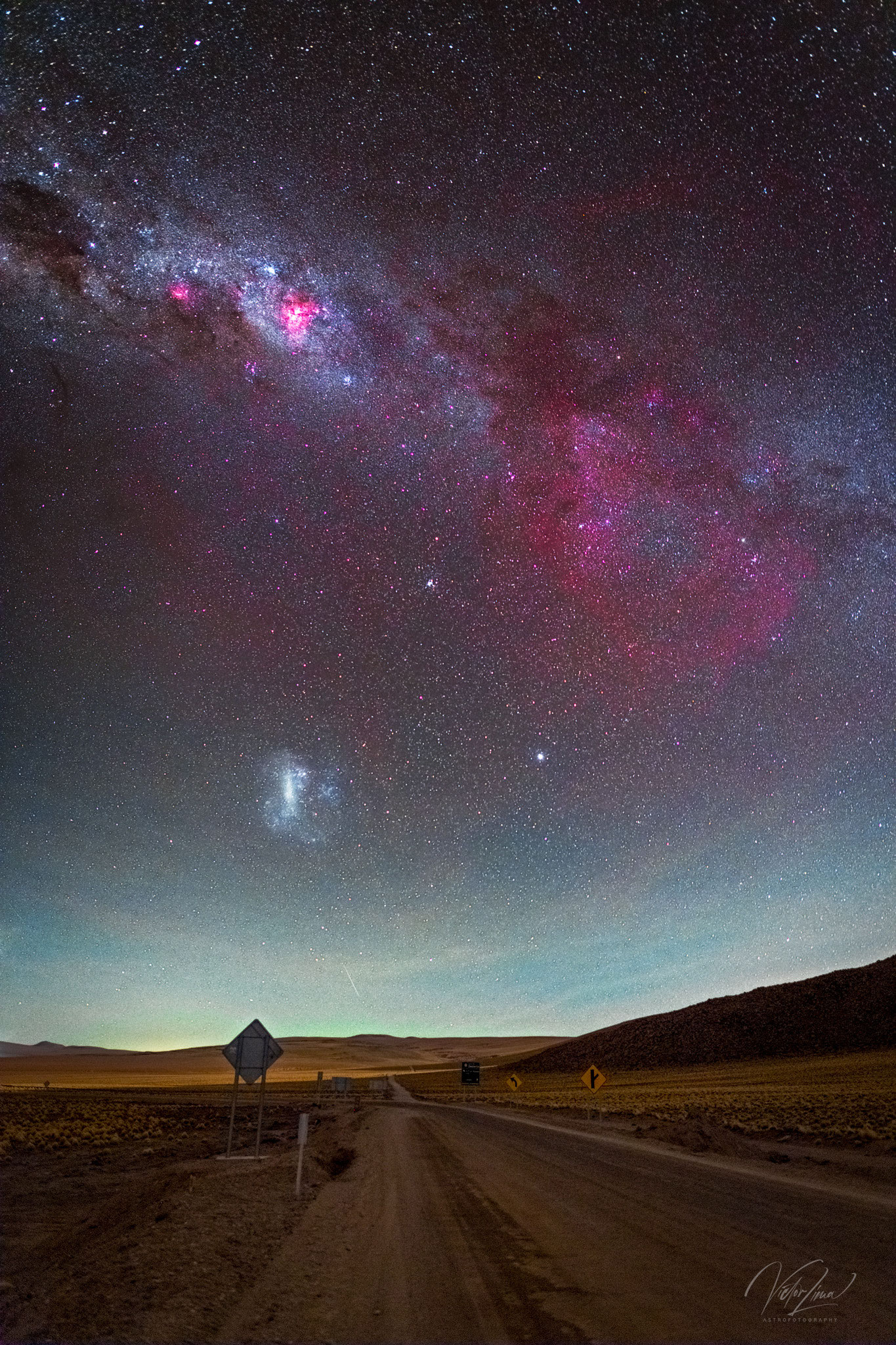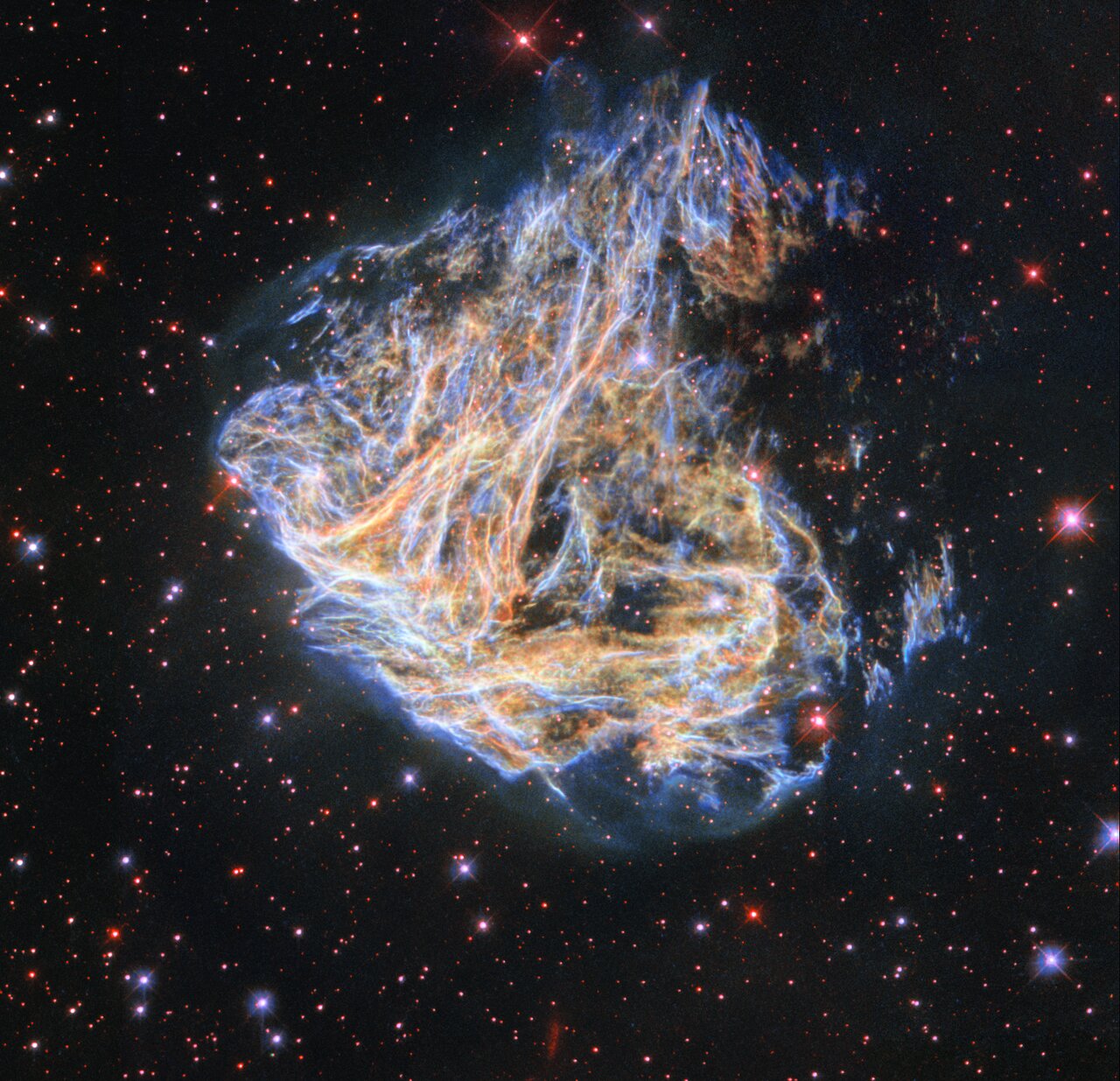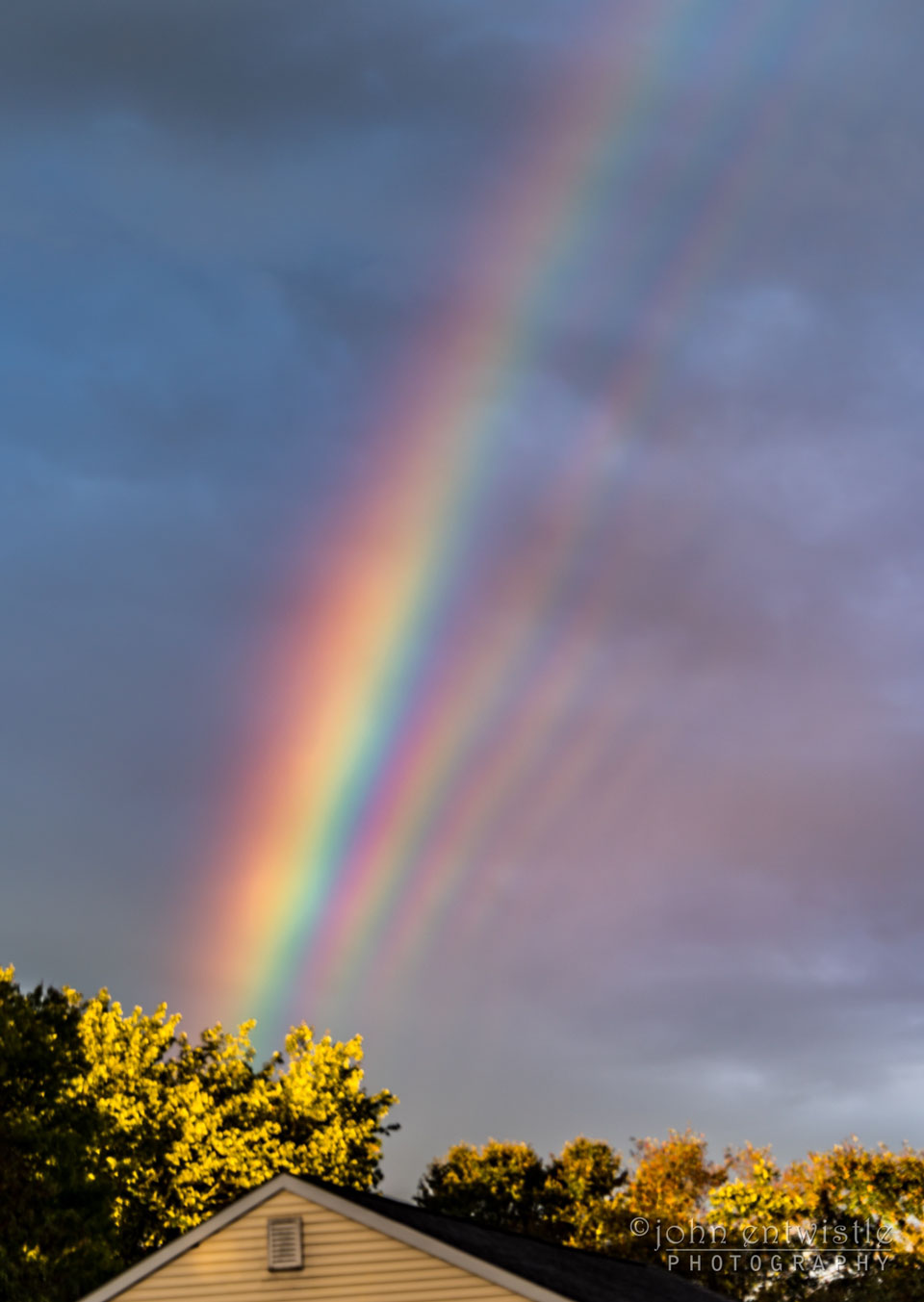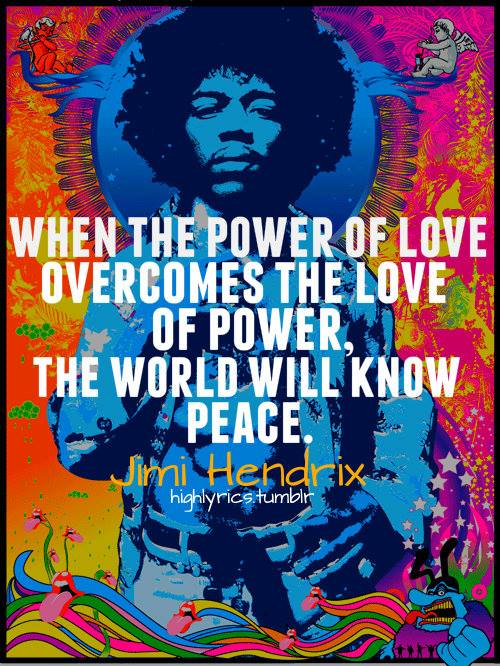Because the Gum Nebula is the closest supernova remnant, it is actually hard to see. Spanning 40 degrees across the sky, the nebula appears so large and faint that it is easily lost in the din of a bright and complex background. The Gum Nebula is highlighted nicely in red emission toward the right of the featured wide-angle, single-image photograph taken in late May. Also visible in the frame are the Atacama Desert in Chile in the foreground, the Carina Nebula in the plane of our Milky Way galaxy running diagonally down from the upper left, and the neighboring Large Magellanic Cloud (LMC) galaxy. The Gum Nebula is so close that we are much nearer the front edge than the back edge, each measuring 450 and 1500 light years respectively. The complicated nebula lies in the direction of the constellations of Puppis and Vela. Oddly, much remains unknown about the Gum Nebula, including the timing and even number of supernova explosions that formed it.

see full post...
Billy Hart (born November 29, 1940) is an American jazz drummer and educator. He is known internationally for his work with Herbie Hancock‘s “Mwandishi” band in the early 1970s, as well with Shirley Horn, Stan Getz, and Quest, among others.
Hart was born in Washington, D.C. He grew up in close proximity of the Spotlite Club, where he first heard the music of Lee Morgan, Ahmad Jamal, and Miles Davis, among others.
Early on in his career he performed with Otis Redding and Sam and Dave, then with Buck Hill. Although he studied mechanical engineering at Howard University, he left school early to tour with Shirley Horn, whom Hart credits with accelerating his musical development. He was a sideman with the Montgomery Brothers (1961), Jimmy Smith (1964–1966), and Wes Montgomery (1966–68). Following Montgomery’s death in 1968, Hart moved to New York City, where he recorded with McCoy Tyner, Wayne Shorter, Joe Zawinul, and Pharoah Sanders (playing on his famed recording Karma in 1969), in addition to playing with Eddie Harris, Joanne Brackeen, and Marian McPartland.
Hart was a member of Herbie Hancock‘s “Mwandishi” sextet from 1969 to 1973, recording three albums with Hancock (Mwandishi, Crossings, and Sextant) in this period. He subsequently went on to perform with Tyner (1973–74), Stan Getz (1974–77), and Quest (1980s), in addition to extensive freelance playing (including recording with Miles Davis on 1972’s On the Corner). He recorded his debut album Enchance in 1977, supported by musicians such as Don Pullen, Dave Holland, and Dewey Redman. Holland returned to play on Hart’s third release Oshumare in 1984, which also featured Branford Marsalis and Bill Frisell, among others.
https://www.youtube.com/watch?v=PfR-M48u_h0
see full post...John Mayall, OBE (born 29 November 1933) is an English blues singer, musician and songwriter, whose musical career spans over sixty years. In the 1960s, he was the founder of John Mayall & the Bluesbreakers, a band that has counted among its members some of the most famous blues and blues rock musicians.
Born in Macclesfield, Cheshire, in 1933, Mayall grew up in Cheadle Hulme. He was the son of Murray Mayall, a guitarist and jazz enthusiast. From an early age was drawn to the sounds of American blues players such as Lead Belly, Albert Ammons, Pinetop Smith and Eddie Lang, and taught himself to play the piano, guitars, and harmonica.
Mayall was sent to Korea as part of his national service, and during a period of leave bought his first electric guitar in Japan. Back in England, he enrolled at Manchester College of Art and started playing with a semi-professional band, the Powerhouse Four. After graduation, he obtained a job as an art designer but continued to play with local musicians. In 1963, he opted for a full-time musical career and moved to London. His previous craft would be put to good use in the designing of covers for many of his coming albums.
see full post...John Lamb (born November 29, 1933) is an American jazz double bassist who was a member of the Duke Ellington Orchestra. Born in Vero Beach, Florida, Lamb as a child loved playing music, specializing in the tuba. He left high school to join the United States Air Force as a musician for their military band. He was stationed in Texas and then Montana, where the long winters left him ample time to practice. When the band’s usual string bass player was unavailable for a gig in 1951, the bandmaster asked Lamb if he could play the bass; Lamb immediately said yes, and before long became the band’s new string bassist. He credited his tuba experience for giving him the “feel” to pick up string bass quickly without any prior experience.
Lamb joined Duke Ellington’s orchestra in 1964, and toured with them for three years. Lamb was more of a fan of Miles Davis and Red Garland when he was with Ellington, later saying, “I was very young and very cocky. I thought I knew more than Duke at that time…I have more time today to reflect on the things that were accomplished back then, and the places we traveled to and all the wonderful people that we met. So one has to be careful what one does in his young years, because if they’re fortunate to live long, it all comes back.” In 1966 Lamb performed with Ellington and Sam Woodyard for artist Joan Miró at the Fondation Maeght in Saint-Paul-de-Vence.
Lamb later moved to St. Petersburg, Florida and taught music in public schools as well as St. Petersburg College. Alphonso Johnson was one of Lamb’s students. Lamb was awarded the Jazz Club of Sarasota’s “Satchmo Award” for service to jazz.
see full post...William Thomas Strayhorn (November 29, 1915 – May 31, 1967) was an American jazz composer, pianist, lyricist, and arranger, who collaborated with bandleader and composer Duke Ellington for nearly three decades. His compositions include “Take the ‘A’ Train“, “Chelsea Bridge“, “A Flower Is a Lovesome Thing”, and “Lush Life“.
Strayhorn was born in Dayton, Ohio, United States. His family soon moved to the Homewood section of Pittsburgh, Pennsylvania. However, his mother’s family came from Hillsborough, North Carolina, and she sent him there to protect him from his father’s drunken sprees. Strayhorn spent many months of his childhood at his grandparents’ house in Hillsborough. In an interview, Strayhorn said that his grandmother was his primary influence during the first ten years of his life. He became interested in music while living with her, playing hymns on her piano, and playing records on her Victrola record player.
see full post...Shreds of the luridly coloured supernova remnant DEM L 190 seem to billow across the screen in this image from the NASA/ESA Hubble Space Telescope. The delicate sheets and intricate filaments are debris from the cataclysmic death of a massive star that once lived in the Large Magellanic Cloud, a small satellite galaxy of the Milky Way. DEM L 190 — also known as LMC N49 — is the brightest supernova remnant in the Large Magellanic Cloud and lies approximately 160 000 light-years away from Earth in the constellation Dorado.
This striking image was created with data from two different astronomical investigations, using one of Hubble’s retired instruments, the Wide Field Planetary Camera 2 (WFPC2). This instrument has since been replaced by the more powerful Wide Field Camera 3, but during its operational lifetime it contributed to cutting-edge science and produced a series of stunning public outreach images. The first of the two WFPC2 investigations used DEM L 190 as a natural laboratory in which to study the interaction of supernova remnants and the interstellar medium, the tenuous mixture of gas and dust that lies between stars. In the second project, astronomers turned to Hubble to pinpoint the origin of a Soft Gamma-ray Repeater, an enigmatic object lurking in DEM L 190 which repeatedly emits high-energy bursts of gamma rays.
This is not the first image of DEM L 190 to be released to the public — a previous Hubble portrait of this supernova remnant was published in 2003. This new image incorporates additional data and improved image processing techniques, making this spectacular celestial fireworks display even more striking!
[Image description: A supernova remnant, in the shape of a flame, occupies the centre and top. It is made of many long strands and thin layers of gas, that brightly glow orange and blue. Faint gas clouds outline its edges. It is surrounded by several scattered blue and red stars, and the background is black and filled with small red stars.

Randall Stuart Newman (born November 28, 1943 LA, CA) is an American singer-songwriter, arranger, composer, and pianist known for his Southern-accented singing style, early Americana-influenced songs (often with mordant or satirical lyrics), and various film scores. His best-known songs as a recording artist are “Short People” (1977), “I Love L.A.” (1983), and “You’ve Got a Friend in Me” (1995), while other artists have enjoyed more success with cover versions of his “Mama Told Me Not to Come” (1966), “I Think It’s Going to Rain Today” (1968) and “You Can Leave Your Hat On” (1972).
Born in Los Angeles to an extended family of Hollywood film composers, Newman began his songwriting career at the age of 17, penning hits for acts such as the Fleetwoods, Cilla Black, Gene Pitney, and the Alan Price Set. In 1968, he made his formal debut as a solo artist with the album Randy Newman, produced by Lenny Waronker and Van Dyke Parks. Four of Newman’s non-soundtrack albums have charted in the US top 40: Sail Away (1972), Good Old Boys (1974), Little Criminals(1977), and Harps and Angels (2008).
Since the 1980s, Newman has worked mostly as a film composer. He has scored nine Disney–Pixar animated films, including all four Toy Story films (1995–2019), A Bug’s Life (1998), both Monsters, Inc. films (2001, 2013), and the first and third Cars films (2006, 2017), as well as Disney’s James and the Giant Peach (1996) and The Princess and the Frog (2009). His other film scores include Cold Turkey (1971), Ragtime (1981), The Natural (1984), Awakenings (1990), Pleasantville (1998), Meet the Parents (2000), Seabiscuit (2003), and Marriage Story (2019).
Newman has received twenty-two Academy Award nominations in the Best Original Score and Best Original Song categories and has won twice in the latter category, contributing to the Newmans being the most nominated Academy Award extended family, with a collective 92 nominations in various music categories. He has also won three Emmys, seven Grammy Awards and the Governor’s Award from the Recording Academy. In 2007, he was recognized by the Walt Disney Company as a Disney Legend. He was inducted into the Songwriters Hall of Fame in 2002 and to the Rock and Roll Hall of Fame in 2013.
see full post...Roy McCurdy (born November 28, 1936) is a jazz drummer.
Before joining Cannonball Adderley‘s Quintet in 1965 and staying with the band until Adderley’s death in 1975, he had played with Chuck and Gap Mangione in the Jazz Brothers (1960–1961), as well as with Bobby Timmons, Betty Carter and Sonny Rollins (1963–1964), appearing on the classic 1963 album Sonny Meets Hawk!
He attended the Eastman School of Music from sixteen to eighteen, during which time he also played professionally with Roy Eldridge and with Eddie Vinson at seventeen. In 1960 he joined the Art Farmer – Benny Golson Jazztet and remained for two years.
Among the influences he cites Louie Bellson, Shelly Manne, Sam Woodyard, Buddy Rich, Papa Jo Jones, Philly Joe Jones and the bands of Duke Ellington, Jimmie Lunceford and Lionel Hampton.
He has also played and/or recorded with Count Basie, Wes Montgomery, Ella Fitzgerald, Sarah Vaughan, Carmen McRae, Joe Williams, Herbie Hancock, Oscar Peterson, Bud Powell, Art Pepper, and the jazz rock group Blood, Sweat and Tears, etc.
see full post...Leandro “Gato” Barbieri (November 28, 1932 – April 2, 2016) was an Argentine jazz tenor saxophonist who rose to fame during the free jazz movement in the 1960s and is known for his Latin jazz recordings of the 1970s. His nickname, Gato, is Spanish for “cat”.
Born to a family of musicians, Barbieri began playing music after hearing Charlie Parker‘s “Now’s the Time”. He played the clarinetand later the alto saxophone while performing with Argentine pianist Lalo Schifrin in the late 1950s. By the early 1960s, while playing in Rome, he also worked with the trumpeter Don Cherry. By now influenced by John Coltrane‘s late recordings, as well as those from other free jazz saxophonists such as Albert Ayler and Pharoah Sanders, he began to develop the warm and gritty tone with which he is associated. In the late 1960s, he was fusing music from South America into his playing and contributed to multi-artist projects like Charlie Haden‘s Liberation Music Orchestra and Carla Bley‘s Escalator Over The Hill. His score for Bernardo Bertolucci‘s 1972 film Last Tango in Paris earned him a Grammy Award and led to a record deal with Impulse! Records.
see full post...Gigi Gryce (born George General Grice Jr.; November 28, 1925 – March 14, 1983), later Basheer Qusim, was an American jazz saxophonist, flautist, clarinetist, composer, arranger, and educator.
While his performing career was relatively short, much of his work as a player, composer, and arranger was quite influential and well-recognized during his time. However, Gryce abruptly ended his jazz career in the 1960s. This, in addition to his nature as a very private person, has resulted in very little knowledge of Gryce today. Several of his compositions have been covered extensively (“Minority“, “Social Call”, “Nica’s Tempo”) and have become minor jazz standards. Gryce’s compositional bent includes harmonic choices similar to those of contemporaries Benny Golson, Tadd Dameron and Horace Silver. Gryce’s playing, arranging, and composing are most associated with the classic hard bop era (roughly 1953–1965). He was a well-educated composer and musician, and wrote some classical works as a student at the Boston Conservatory. As a jazz musician and composer he was very much influenced by the work of Charlie Parker and Thelonious Monk.
https://www.youtube.com/watch?v=OaFQDYd5C-8
see full post...After the remnants of Hurricane Florence passed over the Jersey Shore, New Jersey, USA in 2018, the Sun came out in one direction but something quite unusual appeared in the opposite direction: a hall of rainbows. Over the course of a next half hour, to the delight of the photographer and his daughter, vibrant supernumerary rainbows faded in and out, with at least five captured in this featured single shot. Supernumerary rainbows only form when falling water droplets are all nearly the same size and typically less than a millimeter across. Then, sunlight will not only reflect from inside the raindrops, but interfere, a wave phenomenon similar to ripples on a pond when a stone is thrown in. In fact, supernumerary rainbows can only be explained with waves, and their noted existence in the early 1800s was considered early evidence of light’s wave nature.

Randal Edward Brecker (born November 27, 1945) is an American trumpeter, flugelhornist, and composer. His versatility has made him a popular studio musician who has recorded with acts in jazz, rock, and R&B.
Brecker was born on November 27, 1945, in the Philadelphia suburb of Cheltenham to a musical family. His father Bob (Bobby) was a lawyer who played jazz piano and his mother Sylvia was a portrait artist. Randy described his father as “a semipro jazz pianist and trumpet fanatic. In school when I was eight, they only offered trumpet or clarinet. I chose trumpet from hearing Diz, Miles, Clifford, and Chet Baker at home. My brother (Michael Brecker) didn’t want to play the same instrument as I did, so three years later he chose the clarinet!” Randy’s father, Bob, was also a songwriter and singer who loved to listen to recordings of the great jazz trumpet players such as Miles Davis, Dizzy Gillespie and Clifford Brown. He took Randy and his younger brother Michael Brecker to see Davis, Thelonious Monk, Duke Ellington, and many other jazz icons. Brecker attended Cheltenham High School from 1959 to 1963 and then Indiana University from 1963 to 1966 studying with Bill Adam, David Baker and Jerry Coker and later moved to New York and performed with Clark Terry‘s Big Bad Band, the Duke Pearson and the Thad Jones/Mel Lewis Orchestra.
see full post...Lyle David Mays (November 27, 1953 – February 10, 2020) was an American jazz pianist, composer, and member of the Pat Metheny Group. Metheny and Mays composed and arranged nearly all of the group’s music, for which Mays won eleven Grammy Awards.
While growing up in rural Wisconsin, Mays had a lot of curiosity but had to learn many things all by himself due to a lack of available resources and information. He had four main interests: chess, mathematics, architecture, and music. His mother Doris played piano and organ, and his father Cecil, a truck driver, taught himself to play guitar by ear. His teacher allowed him to practice improvisation after the structured elements of the lesson were completed. At the age of nine, he played the organ at a family member’s wedding, and fourteen he began to play in church.During his senior year of high school, at summer national stage band camp in Normal, Illinois, he was introduced to jazz pianist Marian McPartland.
Bill Evans at the Montreux Jazz Festival and Filles de Kilimanjaro by Miles Davis (both recorded in 1968) were important influences. He attended the University of North Texas after transferring from the University of Wisconsin–Eau Claire. He composed and arranged for the One O’Clock Lab Band and was the composer and arranger for the Grammy Award-nominated album Lab 75.
After leaving the University of North Texas, Mays toured in the US and Europe with Woody Herman‘s jazz big band, Thundering Herds, for approximately eight months. In 1975 he met Pat Metheny at the Wichita Jazz Festival and later founded the Pat Metheny Group. Mays had an extraordinary career as a core musical architect and sound designer of the group for more than three decades. He won total 11 Grammy awards and was nominated 23 times.
see full post...